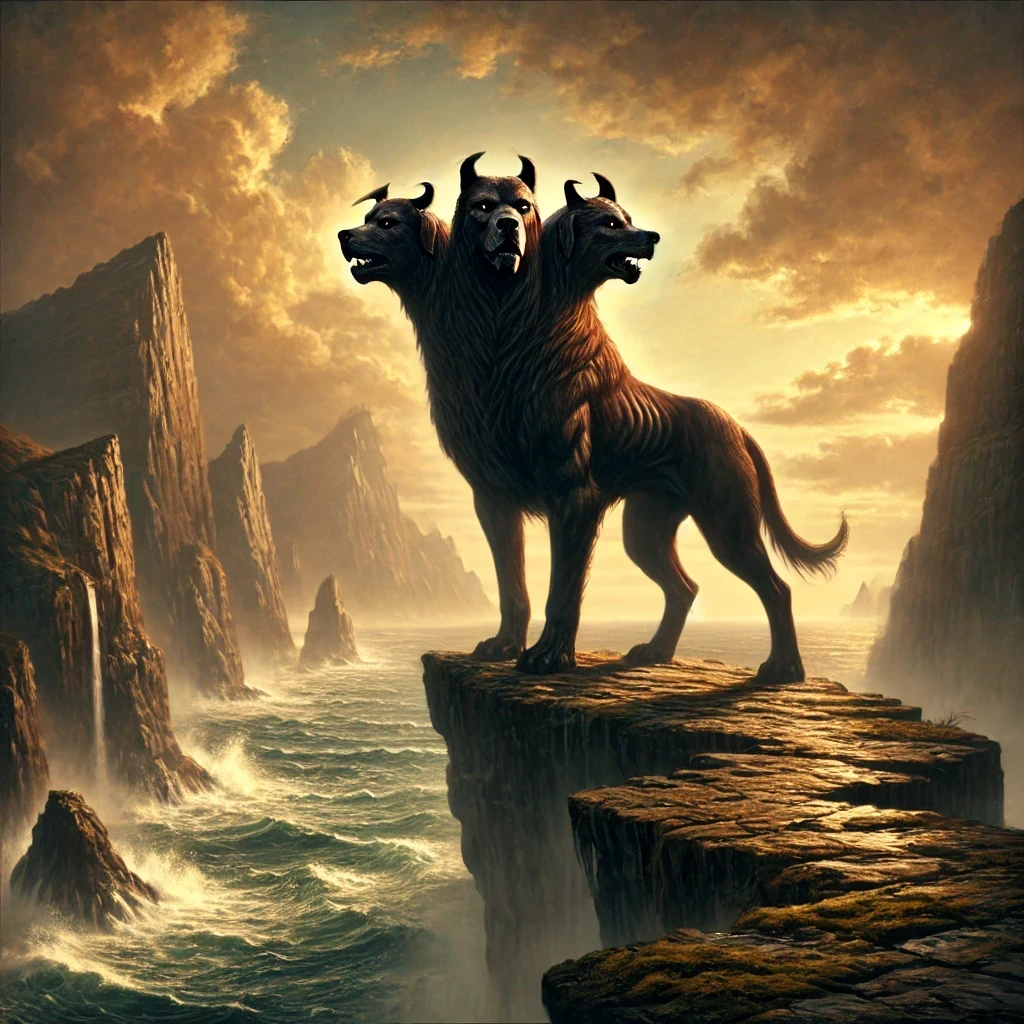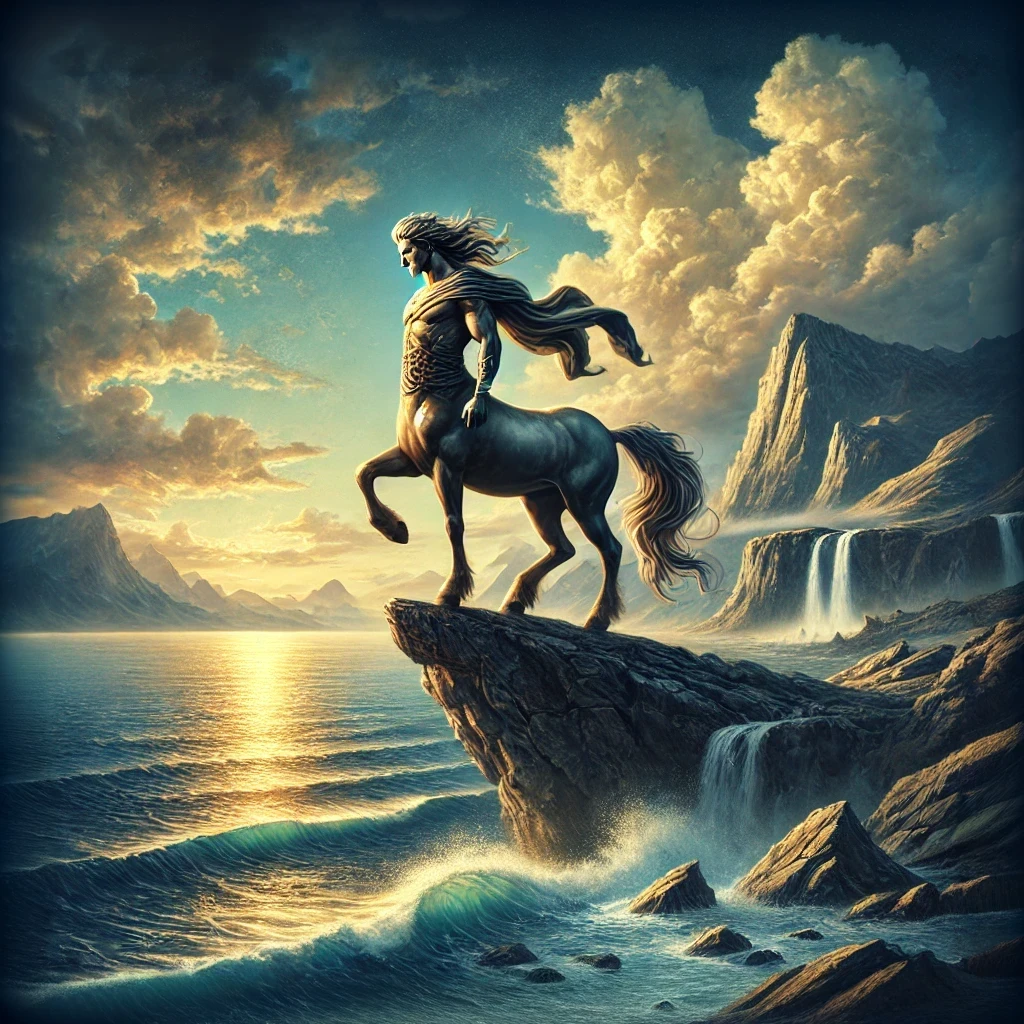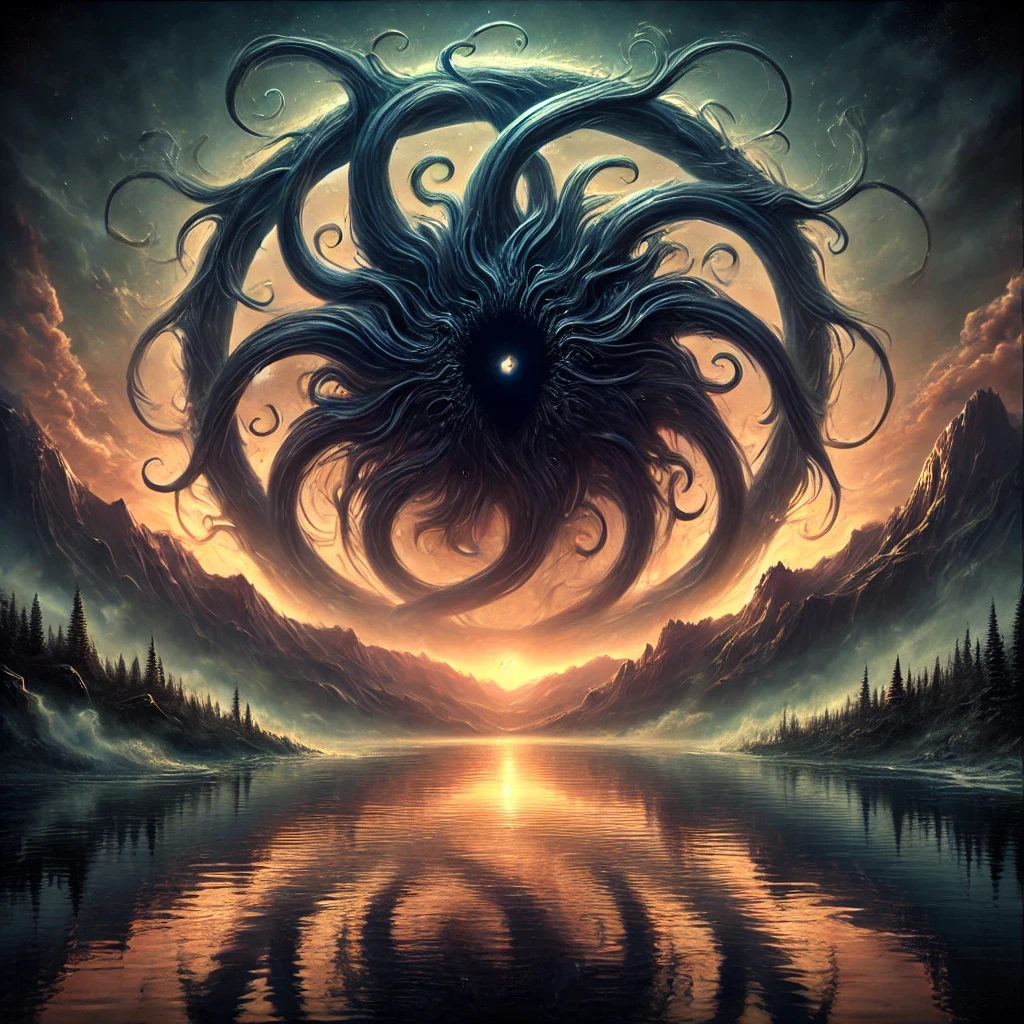Cerberus, the formidable hound of the underworld, is one of the most iconic creatures in Greek mythology. Known as the “Hound of Hades,” this multi-headed dog guarded the gates of the underworld, ensuring that the dead could not escape and the living could not enter without permission. The name “Cerberus” is derived from the Greek word Kerberos, which may be linked to the Sanskrit karbarah or sabalah, meaning “spotted” or “speckled,” possibly referencing the creature’s fearsome appearance. Often referred to as the “Hellhound” or “Guardian of the Dead,” Cerberus was both feared and revered in ancient Greek culture. His role as a boundary keeper between the realms of the living and the dead cemented his place as a symbol of the inescapable nature of death.

Origins
Mythological Roots
Cerberus’ origins are deeply intertwined with the primordial forces of Greek mythology. He was one of the many monstrous offspring of Typhon and Echidna, two of the most fearsome beings in the Greek pantheon. Typhon, a giant with a hundred dragon heads, and Echidna, a half-woman, half-serpent creature, were known for birthing some of the most terrifying monsters in mythology, including the Hydra, the Chimera, and the Sphinx. Cerberus, their three-headed (or, in some accounts, fifty-headed) son, was destined to serve as the guardian of the underworld.
Literary Sources
The earliest references to Cerberus appear in the works of Hesiod and Homer. In Hesiod’s Theogony, the creature is described as a “brazen-voiced hound” with fifty heads, while Homer’s Iliad and Odyssey mention him more briefly, emphasizing his role as the gatekeeper of Hades. Later poets and playwrights, such as Euripides and Virgil, expanded on his myth, adding layers of detail to his appearance and role in the underworld.
Cultural Significance
In ancient Greek culture, Cerberus symbolized the finality of death and the boundary between the mortal world and the afterlife. His presence in myths served as a reminder of the inevitability of death and the futility of attempting to escape it. The creature’s origins reflect the Greeks’ fascination with the unknown and their attempts to personify the forces of nature and the afterlife.
Appearance
Number of Heads
The most common depiction of Cerberus features three heads, each representing a different aspect of time: past, present, and future. However, earlier accounts, such as those by Hesiod, describe him as having fifty heads, emphasizing his monstrous and otherworldly nature. The variation in the number of heads highlights the fluidity of mythological storytelling and the adaptability of myths across different regions and time periods.
Physical Features
Cerberus was often depicted as a massive, muscular dog with a serpentine tail and a mane of live snakes. His eyes were said to glow with an eerie, otherworldly light, and his breath was toxic, capable of killing anyone who came too close. Some accounts also describe his fur as being black as night, further emphasizing his connection to the underworld.
Artistic Representations
In ancient art, Cerberus was frequently depicted on pottery, mosaics, and sculptures. These representations often emphasized his fearsome appearance, with bared teeth, snarling heads, and a menacing posture. The creature’s image was used to evoke fear and awe, reinforcing his role as the guardian of the underworld.
Abilities
Immortality
As a creature born of divine lineage, Cerberus was immortal and impervious to most forms of harm. His immortality made him an ideal guardian for the underworld, as he could not be killed or incapacitated by mortal means.
Supernatural Strength
Cerberus possessed immense physical strength, capable of overpowering even the most formidable heroes. His multiple heads allowed him to attack from multiple angles, making him a nearly insurmountable foe.
Toxic Breath
One of the creature’s most fearsome abilities was his toxic breath, which could kill or incapacitate anyone who inhaled it. This ability made him even more dangerous to those who attempted to enter or escape the underworld without permission.
Keen Senses
Cerberus was said to have an acute sense of smell and hearing, allowing him to detect intruders from great distances. His keen senses made it nearly impossible for anyone to sneak past him undetected.
Habitat
The Underworld
Cerberus’ primary habitat was the underworld, the realm of the dead ruled by Hades. He was stationed at the gates of the underworld, where he prevented the dead from escaping and the living from entering without permission. The underworld itself was a dark, gloomy place, filled with rivers, caves, and shadowy figures.
The River Styx
One of the most famous landmarks in the underworld was the River Styx, which served as the boundary between the world of the living and the dead. Cerberus was often depicted as guarding the far side of the river, ensuring that only those who had paid the ferryman, Charon, could cross.
Caves and Entrances
In some myths, Cerberus was said to guard the entrance to caves or other natural formations that were believed to be gateways to the underworld. These locations were often associated with death and the afterlife, further reinforcing the creature’s role as a guardian of the dead.
Legends
The Twelve Labors of Heracles
One of the most famous myths involving Cerberus is the story of Heracles’ twelfth labor. As part of his penance for killing his family, Heracles was tasked with capturing the hound and bringing him to the surface world. With the help of the gods, Heracles was able to subdue the creature and bring him to King Eurystheus, completing his final labor.
Orpheus and Eurydice
In the myth of Orpheus and Eurydice, the musician Orpheus descends into the underworld to retrieve his beloved Eurydice. Using his enchanting music, Orpheus is able to lull Cerberus to sleep, allowing him to pass safely into the realm of the dead.
Aeneas’ Journey
In Virgil’s Aeneid, the hero Aeneas encounters Cerberus during his journey to the underworld. With the help of the Sibyl, Aeneas is able to pacify the creature using a drugged honey cake, allowing him to continue his quest to speak with his deceased father.
Symbolism
Guardian of Boundaries
Cerberus’ primary symbolic role was as a guardian of boundaries, particularly the boundary between life and death. His presence at the gates of the underworld served as a reminder of the inevitability of death and the impossibility of escaping it.
Fear of the Unknown
The creature’s fearsome appearance and abilities also symbolized the fear of the unknown and the dangers that lay beyond the realm of the living. His multiple heads and serpentine features represented the chaos and unpredictability of the afterlife.
Loyalty and Duty
Despite his terrifying nature, Cerberus was also a symbol of loyalty and duty. He faithfully served Hades, carrying out his role as the guardian of the underworld without question. This aspect of his character highlights the importance of loyalty and obedience in ancient Greek culture.
Worship
Rituals and Offerings
While Cerberus was not worshiped in the same way as the gods, he was often invoked in rituals related to death and the afterlife. Offerings of food, particularly honey cakes, were sometimes made to appease the creature and ensure safe passage into the underworld.
Encounters with Mortals
Stories of encounters with Cerberus often served as cautionary tales, warning mortals of the dangers of attempting to cheat death or enter the underworld without permission. These stories reinforced the creature’s role as a fearsome and implacable guardian.
Cultural Impact
Cerberus’ presence in myths and rituals had a significant impact on ancient Greek culture, shaping their understanding of death and the afterlife. His image was used to evoke fear and respect for the boundaries between the living and the dead.
Associations
Hades
As the guardian of the underworld, Cerberus was closely associated with Hades, the god of the dead. Hades relied on the creature to maintain order in his realm and prevent the dead from escaping.
Heracles
Heracles’ encounter with Cerberus during his twelfth labor is one of the most famous stories involving the creature. The hero’s ability to subdue the hound and bring him to the surface world demonstrated his strength and courage.
Other Mythological Creatures
Cerberus was often associated with other mythological creatures, such as the Hydra, the Chimera, and the Sphinx, all of whom were offspring of Typhon and Echidna. These creatures shared a common theme of representing chaos and danger.
Legacy
Decline in Worship
With the rise of Christianity and the decline of ancient Greek religion, Cerberus’ role as a symbol of death and the afterlife diminished. However, his image and stories continued to influence later cultures and artistic traditions.
Modern Interpretations
In modern times, Cerberus has been reimagined in various forms of media, including literature, film, and video games. His image as a fearsome guardian of the underworld continues to captivate audiences and inspire new interpretations of his myth.
Cultural Impact
Cerberus’ legacy endures as a symbol of the boundary between life and death, as well as the fear of the unknown. His stories and imagery continue to resonate with audiences, reminding us of the inevitability of death and the importance of respecting the boundaries between the living and the dead.
Trivia
1. Cerberus’ Name in Different Cultures:
While Cerberus is a Greek figure, similar multi-headed guardian dogs appear in other cultures. In Norse mythology, Garmr guards Helheim, and in Hindu mythology, the dog Sarama is associated with guarding the afterlife.
2. A Musical Solution:
In some lesser-known versions of the Orpheus myth, it’s not just his lyre that lulls Cerberus to sleep—Orpheus also sings a hauntingly beautiful song that calms the beast, showcasing the power of music over even the most fearsome creatures.
3. The Honey Cake Trick:
In Virgil’s Aeneid, the Sibyl uses a drugged honey cake to pacify Cerberus. This detail suggests that the creature, despite his ferocity, had a sweet tooth, adding a touch of humor to his otherwise terrifying persona.
4. Cerberus’ Siblings:
Cerberus wasn’t the only monstrous sibling in his family. His brothers included Orthrus, the two-headed dog who guarded Geryon’s cattle, and the Lernaean Hydra, the multi-headed serpent slain by Heracles.
5. A Roman Twist:
In Roman mythology, Cerberus was sometimes depicted with a mane of snakes and a serpent for a tail, but he was also occasionally shown with human hands, adding an even more grotesque element to his appearance.
6. The “Eyes of Cerberus” Gemstone:
In ancient times, a rare gemstone called the “Cynosure” was believed to be the petrified eyes of Cerberus. It was thought to protect its bearer from evil spirits and curses.
7. Cerberus in Alchemy:
During the Renaissance, alchemists used the image of Cerberus to symbolize the three stages of the alchemical process: nigredo (blackening), albedo (whitening), and rubedo (reddening), representing transformation and purification.
8. A Fifty-Headed Variant:
While most depictions show Cerberus with three heads, Hesiod’s Theogony describes him as having fifty heads. This version highlights the fluidity of mythological storytelling and the exaggeration of his monstrous nature.
9. Cerberus in Astronomy:
The constellation Canis Major, which includes the star Sirius (the “Dog Star”), has been loosely associated with Cerberus in some interpretations, linking the celestial realm to the underworld guardian.
10. A Modern Pop Culture Icon:
Cerberus has appeared in countless modern adaptations, from Dante’s Inferno to video games like Hades and Final Fantasy. His enduring popularity speaks to his timeless appeal as a symbol of guardianship and the unknown.



